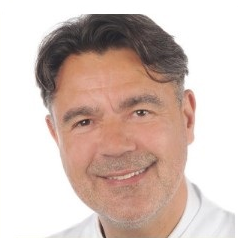Recent Advances in Dental Practice
A special issue of Journal of Personalized Medicine (ISSN 2075-4426). This special issue belongs to the section "Methodology, Drug and Device Discovery".
Deadline for manuscript submissions: closed (10 March 2024) | Viewed by 19633
Special Issue Editors
Interests: virtual treatment planning; digital dentistry
Special Issue Information
Dear Colleagues,
The next level of reliability and efficiency of digital processes in dentistry needs to be put to the scientific test. Optical impression taking using state-of-the-art scanning techniques, as the linchpin of digitization, has a decisive impact on productivity and growth. Are patient engagement and shorter treatment time with higher esthetics in line with personalized medicine? Do multi-platform systems deliver on their promise of predictable and long-term treatment outcomes? Are plug-and-play solutions in the practice still future-proof, or is support from remote teams the new game-changer? Let us answer these questions together with well-founded scientific studies. Clinical as well as laboratory research is most welcome. I look forward to your contributions.
Prof. Dr. Thomas Stamm
Guest Editor
Dr. Jonas Q. Schmid
Guest Editor Assistant
Manuscript Submission Information
Manuscripts should be submitted online at www.mdpi.com by registering and logging in to this website. Once you are registered, click here to go to the submission form. Manuscripts can be submitted until the deadline. All submissions that pass pre-check are peer-reviewed. Accepted papers will be published continuously in the journal (as soon as accepted) and will be listed together on the special issue website. Research articles, review articles as well as short communications are invited. For planned papers, a title and short abstract (about 250 words) can be sent to the Editorial Office for assessment.
Submitted manuscripts should not have been published previously, nor be under consideration for publication elsewhere (except conference proceedings papers). All manuscripts are thoroughly refereed through a single-blind peer-review process. A guide for authors and other relevant information for submission of manuscripts is available on the Instructions for Authors page. Journal of Personalized Medicine is an international peer-reviewed open access monthly journal published by MDPI.
Please visit the Instructions for Authors page before submitting a manuscript. The Article Processing Charge (APC) for publication in this open access journal is 2600 CHF (Swiss Francs). Submitted papers should be well formatted and use good English. Authors may use MDPI's English editing service prior to publication or during author revisions.
Keywords
- digital dentistry
- digital impression
- intraoral scanner
- CBCT
- virtual surgical planning
- 3D printing
- 4D printing
- dental applications
- clear aligner
Benefits of Publishing in a Special Issue
- Ease of navigation: Grouping papers by topic helps scholars navigate broad scope journals more efficiently.
- Greater discoverability: Special Issues support the reach and impact of scientific research. Articles in Special Issues are more discoverable and cited more frequently.
- Expansion of research network: Special Issues facilitate connections among authors, fostering scientific collaborations.
- External promotion: Articles in Special Issues are often promoted through the journal's social media, increasing their visibility.
- Reprint: MDPI Books provides the opportunity to republish successful Special Issues in book format, both online and in print.
Further information on MDPI's Special Issue policies can be found here.






